”The religious observances of the Kafir are so mixed, and show such an impartial leaning to Zoroastrianism, Brahmanism, and pure heathen superstition, that it might appear that they are either the possessors of an original form of religion, from which has been evolved the first principles of other modern forms, or that their own form is but an imperfect adaptation of Gabr and Brahmanic beliefs to an ancient mythology. Apparently, they have no written language the characters of which might give us a clue to their origin.”
In the memories of most Westerners the history of Afghanistan begins in the nineteenth century, when the territory was thought of as the land of the Khyber pass and was the chessboard upon which agents of England and Russia discreetly played what Rudyard Kipling called the great game for India.

''The wooden statues from Nuristan, one of Afghanistan's mountainous northeastern provinces, are an apt subject for an inaugural exhibition. Museum staff had worked hard to hide the collection from looters and Islamic fundamentalists intent on destroying all idols and artistic depictions of the human form. The figures, from what was formerly known as Kafiristan, or Land of the Heathens, are ancestor effigies and animistic and polytheistic gods, representing beliefs and traditions that were practiced there little more than 100 years ago.''
Yet, long before, Afghanistan had formed a part of the great Persian, Greek and Indian empires. The Silk Road sliced through Afghanistan on its way from the Mediterranean to the Far East, creating wealthy cities along the way. This wealth, and command of the trade route, was savagely fought for by Parthians, Sakas, and other tribal groups, all of whom left some impress of their cultures. In the thirteenth century, Genghis Khan ravaged the country, destroying much of the cultural residue that had accumulated. One of the ancient warring bands, however, left behind a civilization that still remains in the valleys of the Hindu Kush. These are the Kafirs, as the neighboring Moslems named them, or Infidels.
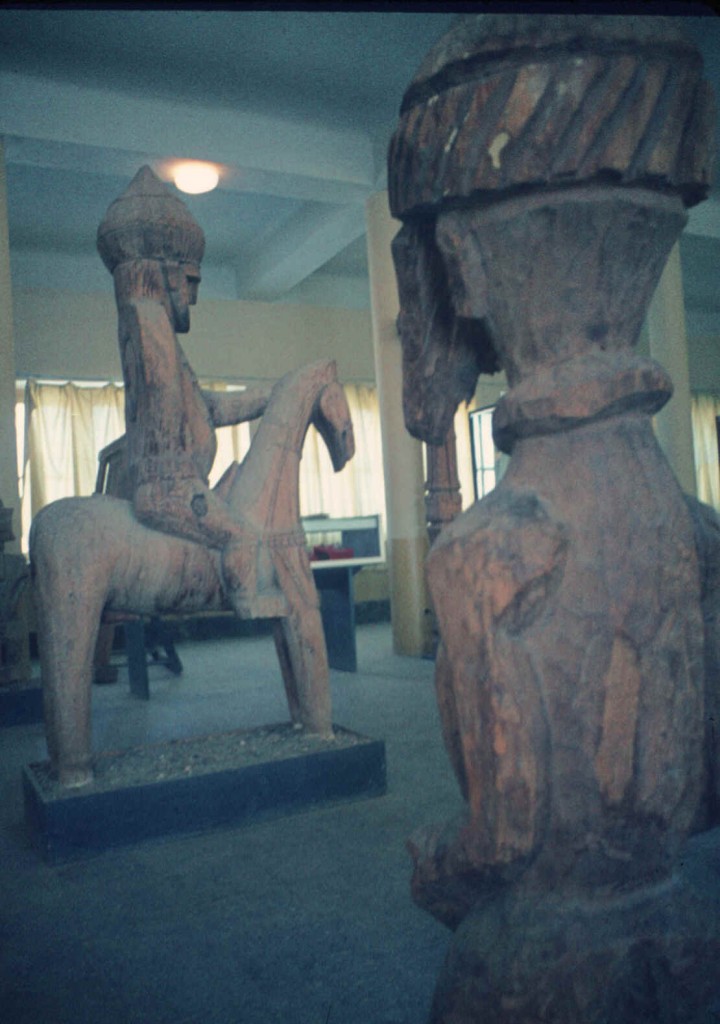
''The images below were taken between 1968-71 in the Kabul Museum. They were shot with a half-frame 35mm camera. ID information is taken from Art in Afghanistan: Objects from the Kabul Museum by Frances Mortimer Rice and Benjamin Rowland (Coral Gables, University of Miami Press, 1971).''
”Morgenstierne was to wait for over 25 years before he could return to Afghanistan and travel to Nuristan proper, which he did for the first time in 1949. His second linguistic expedition, however, started in 1929. Only Chitral was open to his linguistic research and strict orders were given not to cross the Afghanistan border. This trip and years of comparative studies that followed resulted in a proposed map of the distribution of the many surprisingly ancient languages in this area (Fig. 4). 3 Morgenstierne argued that the Nuristani (Kafir) family of languages that includes Kati, Prasun and Ashkun, was possibly formed even before the separation of the Iranian from the Indian language over 3000 years ago. Highly controversial at the time, this claim remains his most important discovery.The ancient origin of the Kafir culture is an indication of the age of the indigenous peoples and their northern origin. The Kafir religion resembles the Vedic religion of the Aryan invaders of the Indian continent who destroyed the rural Harappa culture of the Indus Valley around 1500 BC. It is believed that the Kafirs could be descendants of the Aryan invaders who stayed in the Hindu Kush Mountains.”

''The expressive wooden figures were meaningful in a social context. They symbolized social status of prominent individuals or represented deities. A mounted horseman seated on a twin-headed animal represented the highest status achievable for a tribe member and was earned either by throwing lavish feasts to at least one village or by becoming a successful assassin. ''
At the end of the nineteenth century the Kafirs were divided into several tribes, surrounded by Moslems with whom they were in continuous and bitter conflict. In 1895, the Emir of Kabul, determined to purge the land of the unbelievers and the Kafirs were forced to become Moslems under threat of execution. Kafiristan, the Land of the Infidels, became Nuristan, the Land of Light. However, beyond he Afghan border, in Pakistan, was a band of Kafirs known as the Kalash, who escaped the Emir’s forces.
The Kalash tribe, highly isolated in cliffside villages of the Chitral region of Pakistan, preserve their ancient traditions and their polytheistic religion. These Kafirs sustain themselves with primitive agriculture, sheep, cattle and goats. Their dwellings, solidly built of wooden beams and stone are simple; their art too is simple… and enormously energetic.
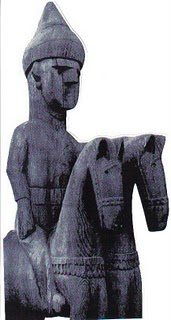
''The museum in Kubal housed twenty of these wooden images. Until 1993 when it was bombed and looted. The United Nations tried to stop the looting but 90% of the collection was destroy it would destroy all artifacts of pre-Islamic cultures. Statues and object in Afghanistan were destroyed. A few artifacts occasionally turn up on the black market, but there is no way to regain the cultural legacy of the Kafir people. What was left of the wooden structures was said to be used as firewood. ''
The horse motif occurs often in Kafir art, yet there are no horses in the valley of the Kalash. The theme would appear to have its roots in the art of the Indo-Europeans who lived in Afghanistan centuries ago. Wherever the representation of the horse occurs; at the entrance to a village, on a house, or in a cemetary, it conveys great prestige and sometimes ominous power. The Kafirs decorate nearly everything they have:
The finest and most elaborate Kafir art is found in graveyards. Propped up against the wooden coffins are wooden effigies of men. Depending on the importance of the dead person, there may be a single statue, several statues, or an imposing statue of a man on horseback. Kafir coffins are left on the surface of the ground, their lids weighted down by stones. The figures are possessed of remarkable poise and authority, and are elaborately carved. They are often marked with traces of scars and wounds, and their horses are decked out in tassels and other ornaments.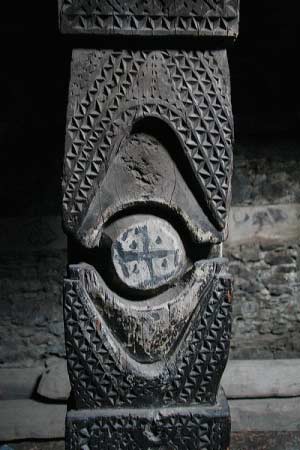
Sculpture is also used to decorate the shrines and altars of Kalash gods. Mahandeo, the supreme god of the Kalash, has an altar of stone and wooden beams, crowned with four horses heads. The Gestakhan, or house of ceremonies, occupies a prominent position in each village. Dedicated to the goddess Gestak, protector of the family, it contains elaborate carvings. The only sculpture of a deity in human form, however, is that of the protector of pregnant women, Dezalik, whose image is kept in a house where women are confined during childbirth.
The prototypes of these sculptures are elusive. The figures recall, at times, Persian and Indian work. Whatever their antecedents, however, the primitive sculptures of the Kafirs are quite unlike the works of other primitive sculptors. They stand boldly, and often nobly, alone.
”The military conquest led to the destruction of the temples and the effigies of deities as well as of the very numerous ancestor figures. There survived only several small clan temples with the original figural decoration of their posts, and some 32 figures, which were brought to Kabul as trophies. Fourteen of them entered the collection of the Kabul Museum, four were given to French museums in Paris (Musée Guimet and Musée de l’Homme), and the rest disappeared. Several other statues entered the Kafir collection at a later stage,among them those in the large Nuristan collection of Dr.Max Klimburg, who had undertaken extensive field research in the 1970s. On his recommendation this collection was donated to the National Museum by the Government of the Federal Republic of Germany in October of 1978 (see Klimburg 1981) Most of the Nuristan collection had survived the plundering of the Museum during the civil war in Kabul in 1993 and 1994. However, it then fell victim to the Taliban, who chopped up the effigies when in March of 2001 their leader, Mullah Omar, ordered the destruction of all the statuary in the country.”


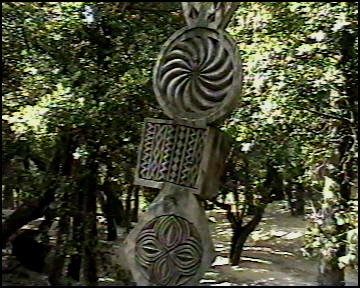
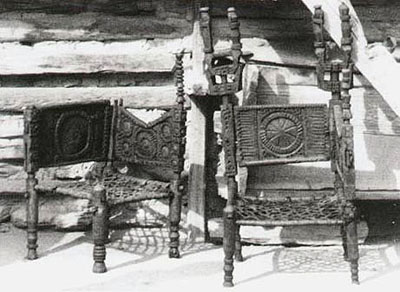



 COMMENTS
COMMENTS